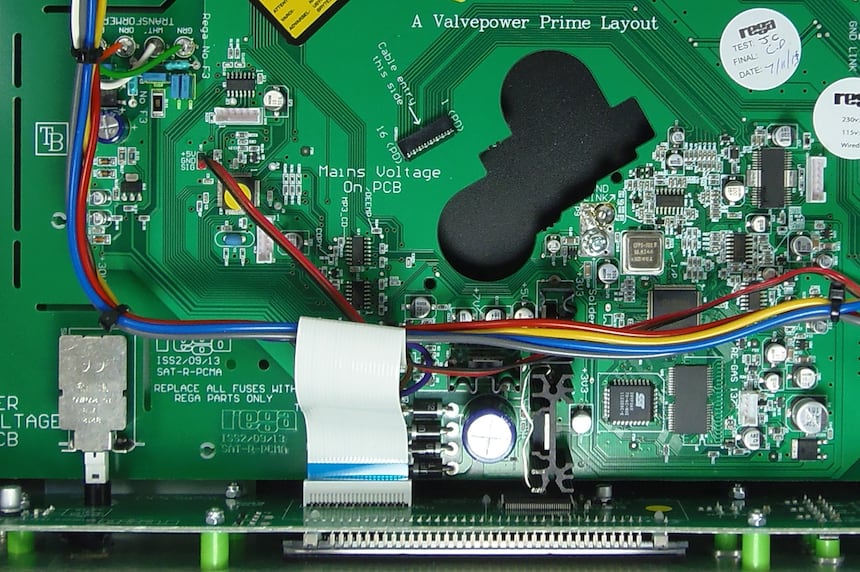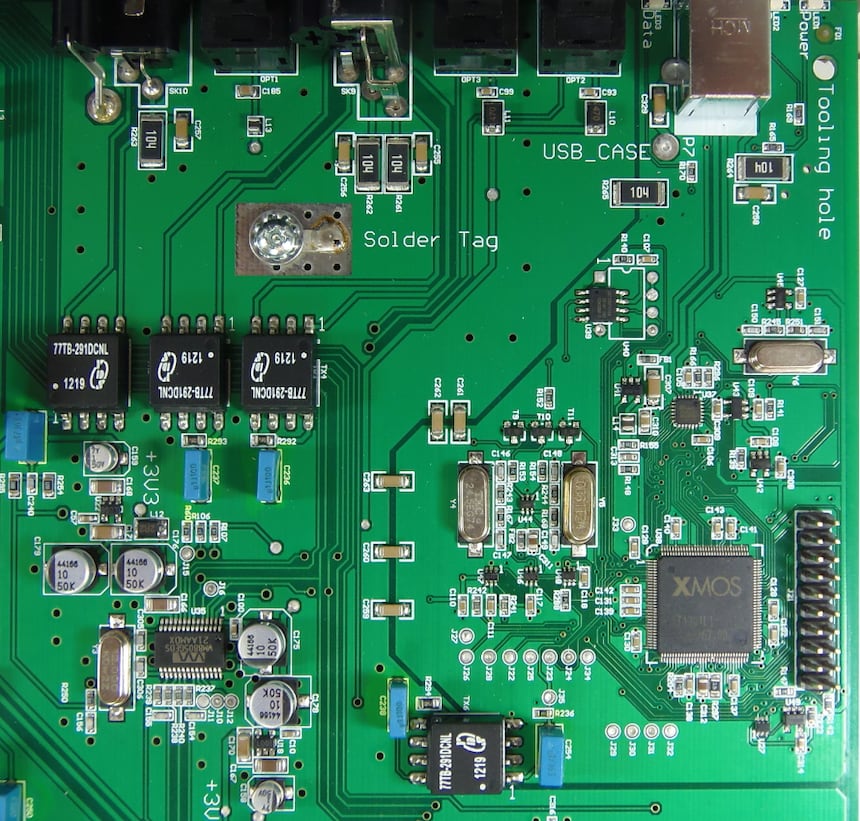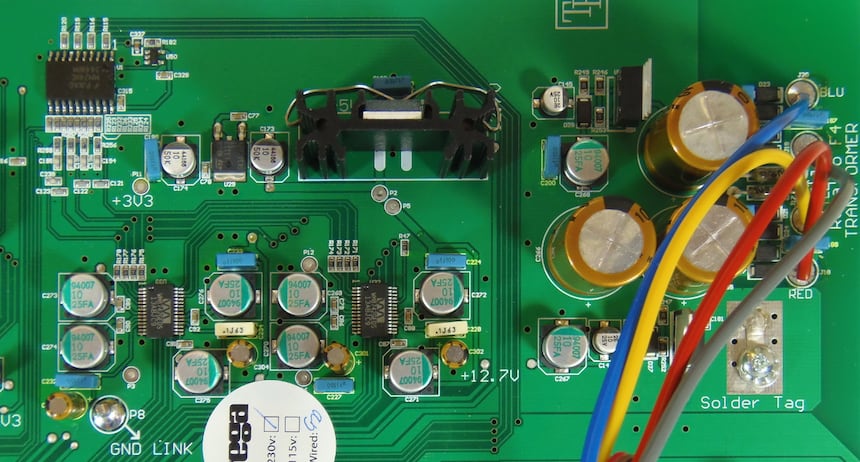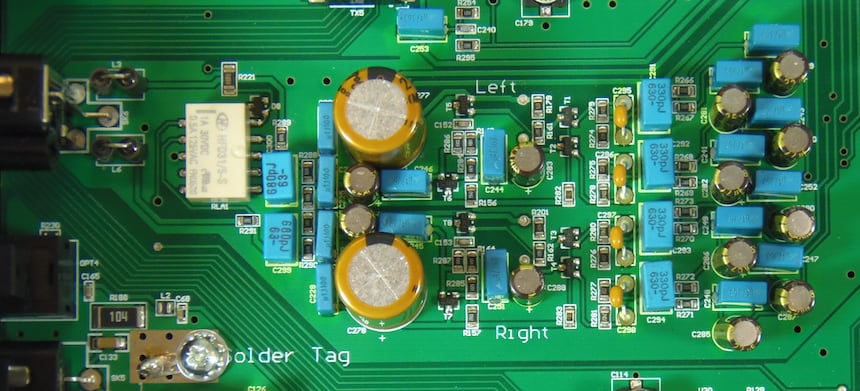Rega?s first CD player was named ?Planet? and has a top-loading mechanism which means placing the disk directly onto the reader, closing it with a cover featuring a plastic window, all things designed to remind you of the vinyl era when more people physically handled their records and watched them spinning.
Its successors (apart from the Isis model), which went under the Apollo and Saturn names, carried on with the tradition of borrowing their monikers from our solar system, and also copied the vinyl-style disk loading feature.
As with a number of audiophile manufacturers, Rega don?t update their range often, responding only to real technological evolutions or changes to the way people consume their music. That?s exactly what?s happened over the last few years with music downloads stored on computers, especially in HD Studio Master, which require a DAC for 24 bits to 192 kHz sampling, or even more for some rare models.

Rega?s new DAC equipped CD player, the Saturn-R, is the subject of this review, and arrives as the replacement of the Saturn. It?s kitted out with an asynchronous USB and four S/PDIF inputs, all compatible with 24 bits to 192 kHz digital audio signals. Even more, due to its five filters, the Saturn-R allows you to fine-tune the sound to your tastes or go for seriously high fidelity.

Presentation
For Rega visual aesthetics have never been the most important thing (they don?t affect the sound, for one) and the Saturn-R is no exception to the rule.

It?s sober, functional, and efficient with the front made up mostly from Plexiglas (attached on top of an aluminium plaque). The left hand side hosts the power switch, there?s a display in the middle, and on the right are four buttons (play/pause, forward, back, and stop) for the CD player.

This front is fixed onto two milled aluminium flanges while the disk loader is mounted on the top of the casing. A hinged cover provides access to insert the CD, with a Hall effect sensor (magnetic field response to a magnet located in the lid) used to detect when the lid is open and prevent the mechanism from working.

You can see on the right of the visual above the little oblong hole which holds the Hall effect sensor?s magnet when the lid is closed.
Rega opted for an elegant and non-wearing solution, even though they could have easily used a safety position switch toggled by the closing of the cover.
A very nice remote control allows you to control the CD (including skipping forward and back, which isn?t possible using the controls on the front), to programme the track playback, and to show the remaining playback time...
Connectivity
The Rega Saturn-R has an asynchronous USB to connect a computer and four digital S/PDIF inputs (two coaxial and two optical), which is pretty decent.

The analogue signals, coming from the CD or digital files, output directly via a pair of RCA jacks, while you can also use the two pairs of S/PDIF (optical et coaxial) as outputs for the digital signals processed from the USB, and others from the CD playback (these are automatically in 16 bits to 44,1 kHz).
Manufacture
The Saturn-R?s casing is all aluminium and is made up of a 4mm thick base with the two sides fixed on top, a rear and front face (described above) and the top part with the CD mechanism. The separate elements come together to provide a rigid casing.
Apart from the display and controls installed on a card on the front face, the electronics are all contained on a large circuit board, which takes up most of the space, alongside a large toroidal transformer power supply.

It?s all put together very professionally and cleanly, while the different sections are clearly separated from each other.
Display and CD controls
The photo shows the electronics behind the display and for the CD player with their specific current supply and the +5V for the logic circuits.

The power for the display is at the top on the left while the power for the CD is at the bottom of the photo. We noted the size of the rectifier diodes (on the right of the ribbon cable) and the general use of radiators on the regulators. They?re significant as the playback mechanism requires two motors and the electronics used to play CDs use a number of highly integrated circuits, which need a lot of power.
Digital Inputs and Outputs
The USB input is interfaced using a USB3318 Microchip (ex-SCMS) circuit, then the signals are processed by an XMOS processor, which extracts the I2S bus with an insignificant amount of jitter.
Two of the quartz crystals used by the XMOS processor (to the left, and slightly above), one used for signals with a 44,1 kHz bitrates and multiples, the other for 48 kHz and its multiples, seem to be standard models.

The S/PDIF digital inputs and outputs are managed by a Wolfson Microelectronics WM8805 transceiver with eight inputs, which deals with signals from 24 bits to 192 kHz. The black objects in the centre left of the picture are isolation and impedance matching transformers necessary for the S/PDIF signals.
Conversion, filtering, associated power supply
The Rega Saturn-R uses a digital to analogue conversion chip for each channel, a Wolfson WM8742 (24 bits to 192 kHz) model that can filter signals in five different ways which Rega allows the user to adjust (see page 11 of the manual for more details). Above them you can see cooling for the regulator, which provides +5V of current to the analogue parts of the WM8742 and also an L1117-33 regulator providing 3,3V to the digital side.
On the left of the photo, you can see what looks like a well-isolated circuit. It contains the buffers that drive the digital signals going towards the conversion chips. This is a 74HC244 Octal buffer/line driver which you?ll see on a lot of PC cards.

On the right hand side are the symmetrical power supplies of +13V and -13V for the filtering of the signals from the DAC (the +13V also feeds the +5V for the analogue WM8742). The regulators used, an LM317 (positive current) and an LM337 (negative current) can be adjusted for low-noise.
These currents are well filtered by audiophile quality Nichicon Fine Gold electrochemical capacitors (1000 ?F/35V for the -13V and 2 x 1000 ?F/35V for the +13V).
The signals from the digital to analogue conversion are then filtered, not by operational amplifier cells, but with passive filtering using audiophile quality capacitors followed by bipolar junction transistors and discreet components allowing impedance adaptation (an identical filter is used in the Rega DAC )
The signals are then sent to the RCA outputs via a muting relay circuit and are then treated to high-frequency noise and interference reduction.

Listening
About two years ago (time flies) we tested the brand?s plainly titled ?DAC?, a digital to analogue convertor.
Two years in digital electronics is an age, and the Rega DAC Rega features a USB input interfaced with a Texas Instruments PCM2707 circuit which limits the playback to 16 bits to 48 kHz, which hindered it with regards to Studio Masters and ultimately denied it some Qobuz(z), despite its convincing sound quality.
Nonetheless, listening to the Saturn-R CD player and DAC is a real pleasure, especially with its 24 bits to 192 kHz playback!
We?re happy to admit that this is the kind of device that reminds you that it?s worth putting your trust in the hands of the experts.
Its not just a the clock drift of less than one-second-per-ten-billion-years (resulting in an impossibly low jitter rate) that makes the musical reproduction so transcendent, but also the two high performance conversion chips, backed up by high quality filtering components.
There are no operational amplifier filters reducing the gain (naturally very high, in the range of 120 dB, meaning a input current of 1?V gives 1V of output) by the kind of counter-reaction that has been shown to negatively affect the musicality.
Even if we?ve loved some DACs using operational amplifier filters (which are often very impressive), the DACs without them seem to be on another level, and offer more truly authentic sound reproduction, as is the case with the Rega Saturn-R.
We revelled in the sensual introduction to the Scottish Fantasia by Max Bruch with Kyung Wha Chung on violin accompanied by the Royal Philharmonic Orchestra conducted by Rudolf Kempe, an excellent original analogue album which has been digitally converted in 24 bits to 96 kHz.
It even becomes difficult to discern between the good and the bad, because it?s all good! You can lose yourself in the music, with the violin singing and the accompanying orchestra full, but never grandiose.
The 24 bits to 192 kHz Studio Masters version of Dvorak?s bubbling Allegro from ?Suite Américaine? by the Budapest Festival Orchestra conducted by Iván Fischer reveals all its colours (including the tinkling of the triangle) above the mass of the orchestra. The subtlest musical details are always apparent but never overpowering.
Playing back Love Letters by Metronomy (24 bit to 96 kHz Studio Masters version) with its crackling and breathy ?vinyl? sound, really benefits from the Saturn-R. It?s a perfect showcase for all the subtleties, and strange and wonderful noises on the original analogue recording.
Then we cranked up the CD mechanism for the Fantasia On British Sea Songs in the 11 cm silver version to see that, once again the high quality, finesse, musical breathability, unconstrained dynamic, and the natural and easy listening experience were all there!
So, with absolutely no need to beat around the bush, we can quickly award serious Qobuz(z) to the Rega Saturn-R. It?s a piece of kit that seems to shine as brightly as the heavenly body it?s named after.
Site gt audio (importer)
Playback capacities

Test system used:
- Micromega amplifier AS-400
- Speakers Triangle Antal Anniversary
- Filter1 chosen following a test of all five Saturn-R filters.
If you are a manufacturer, importer, distributor or other player in the area of quality sound and you?d like to get in touch with us feel free to send us an email at: newstech@qobuz.com
Original Text: https://www.qobuz.com/info/Hi-Fi/Bancs-d-essai/Rega-Saturn-R175075
Original Author: Philippe Daussin Translator: Jethro Turner

